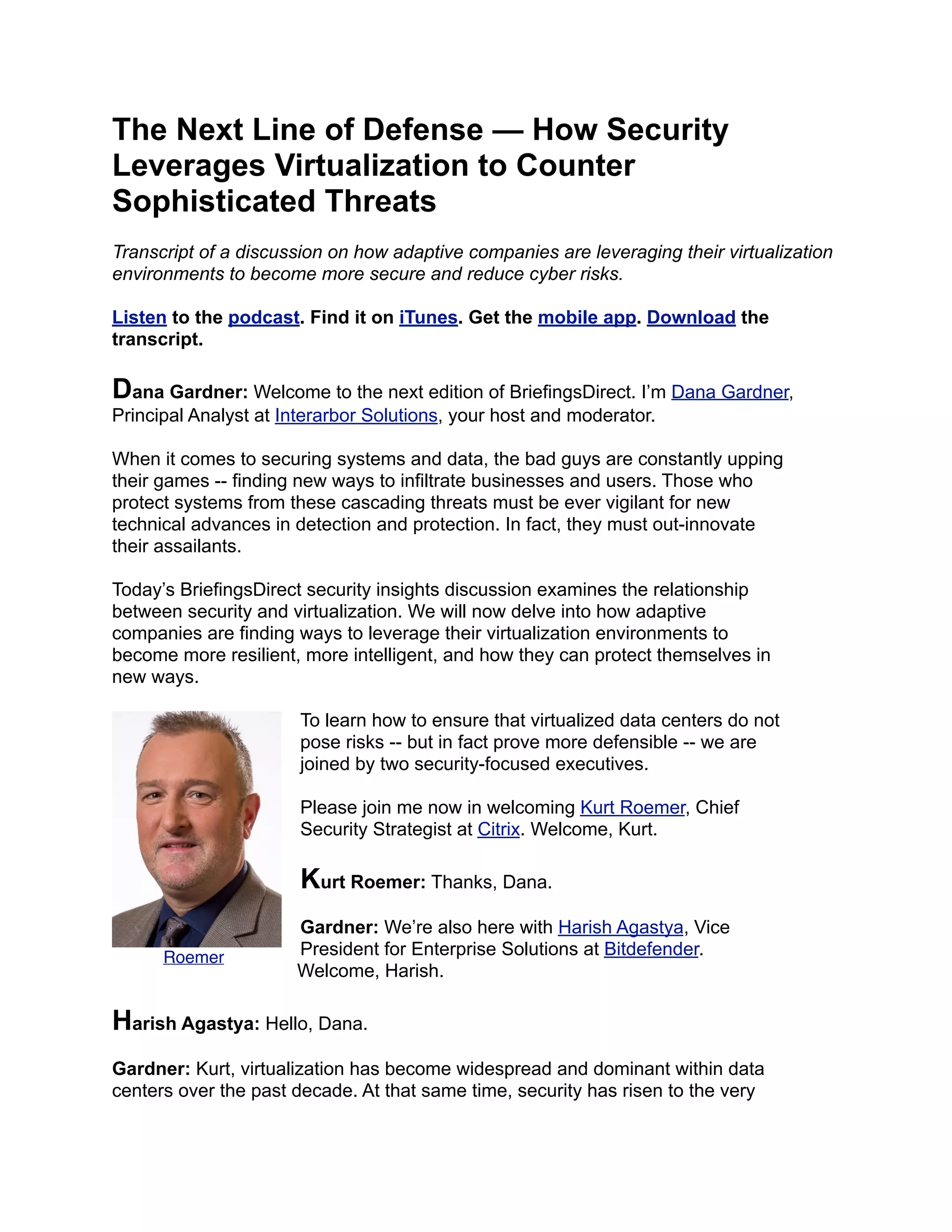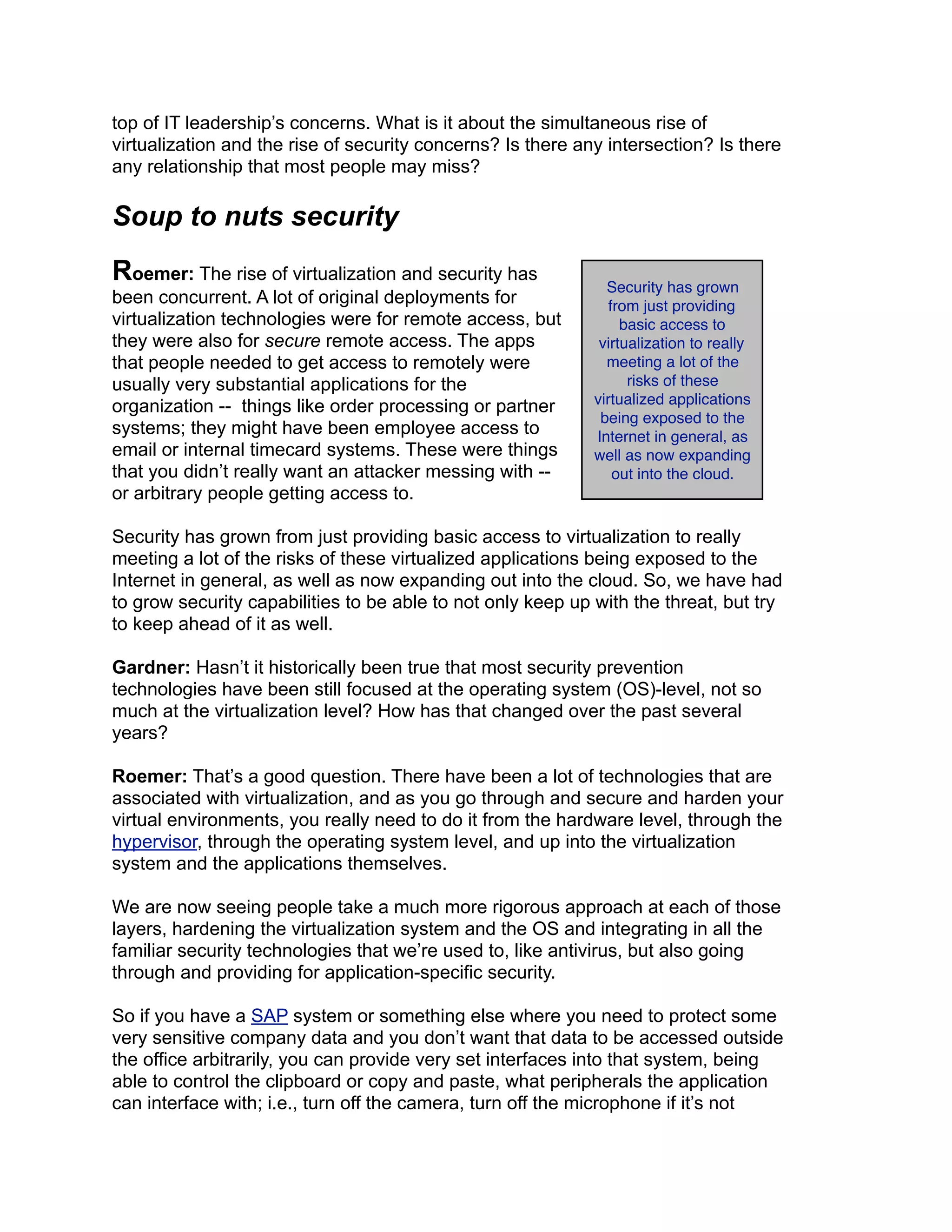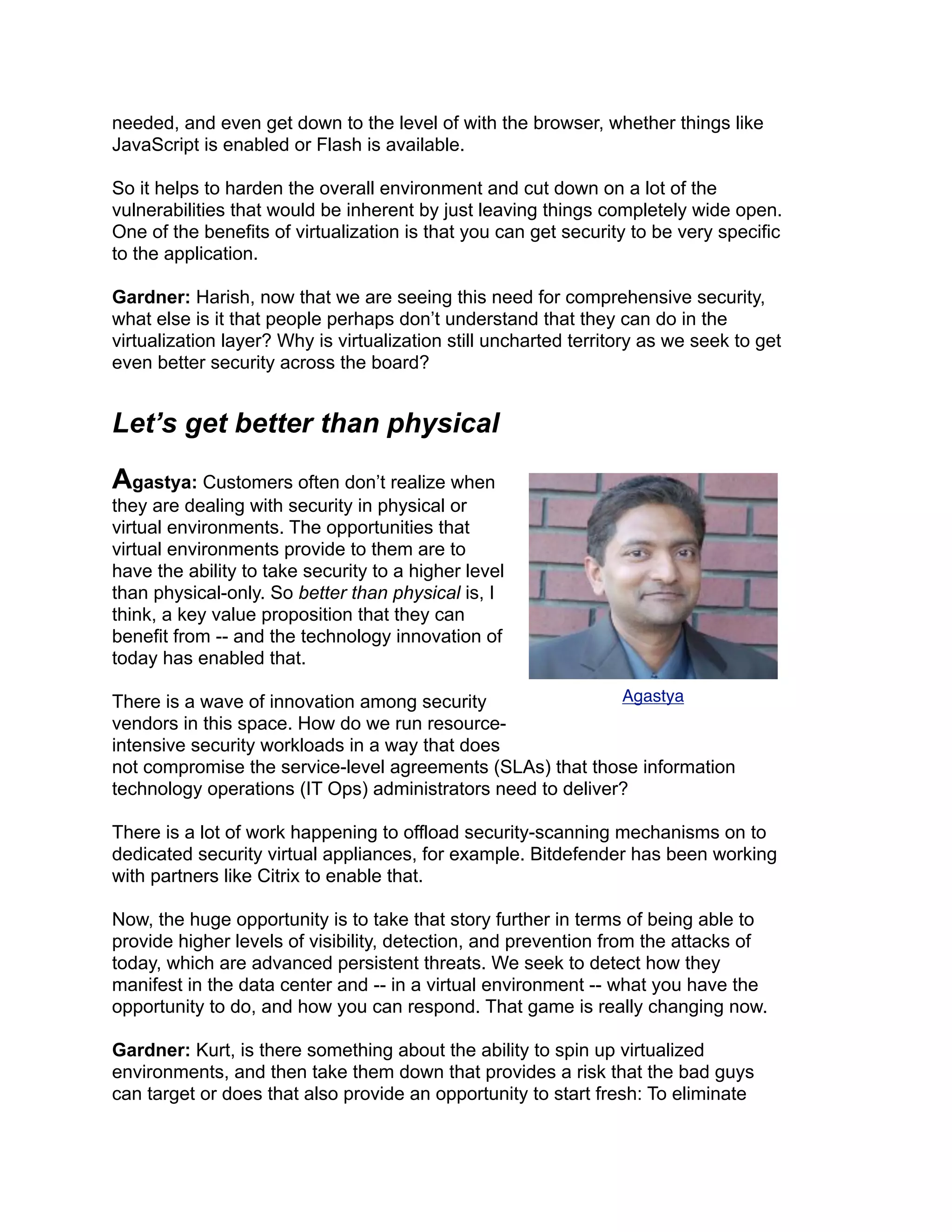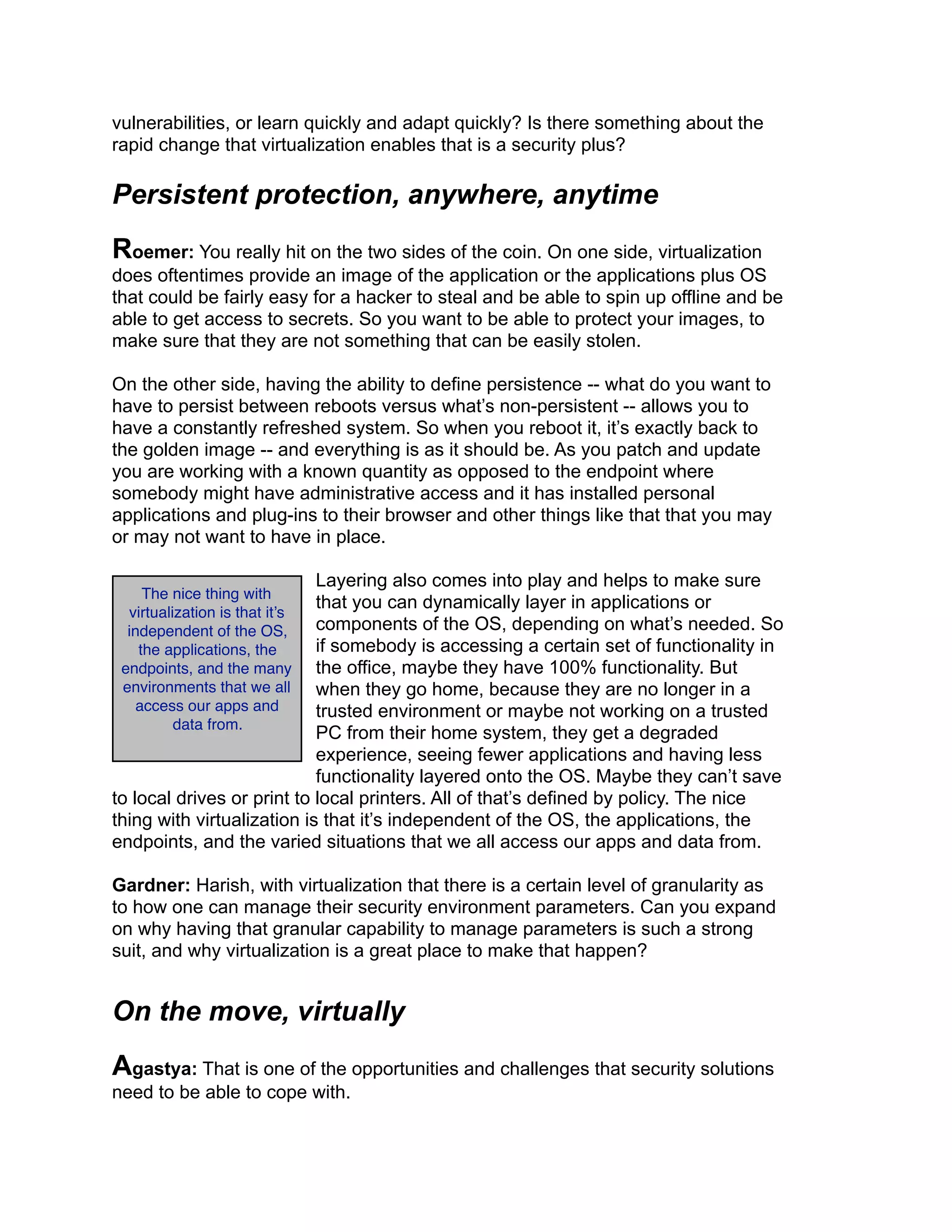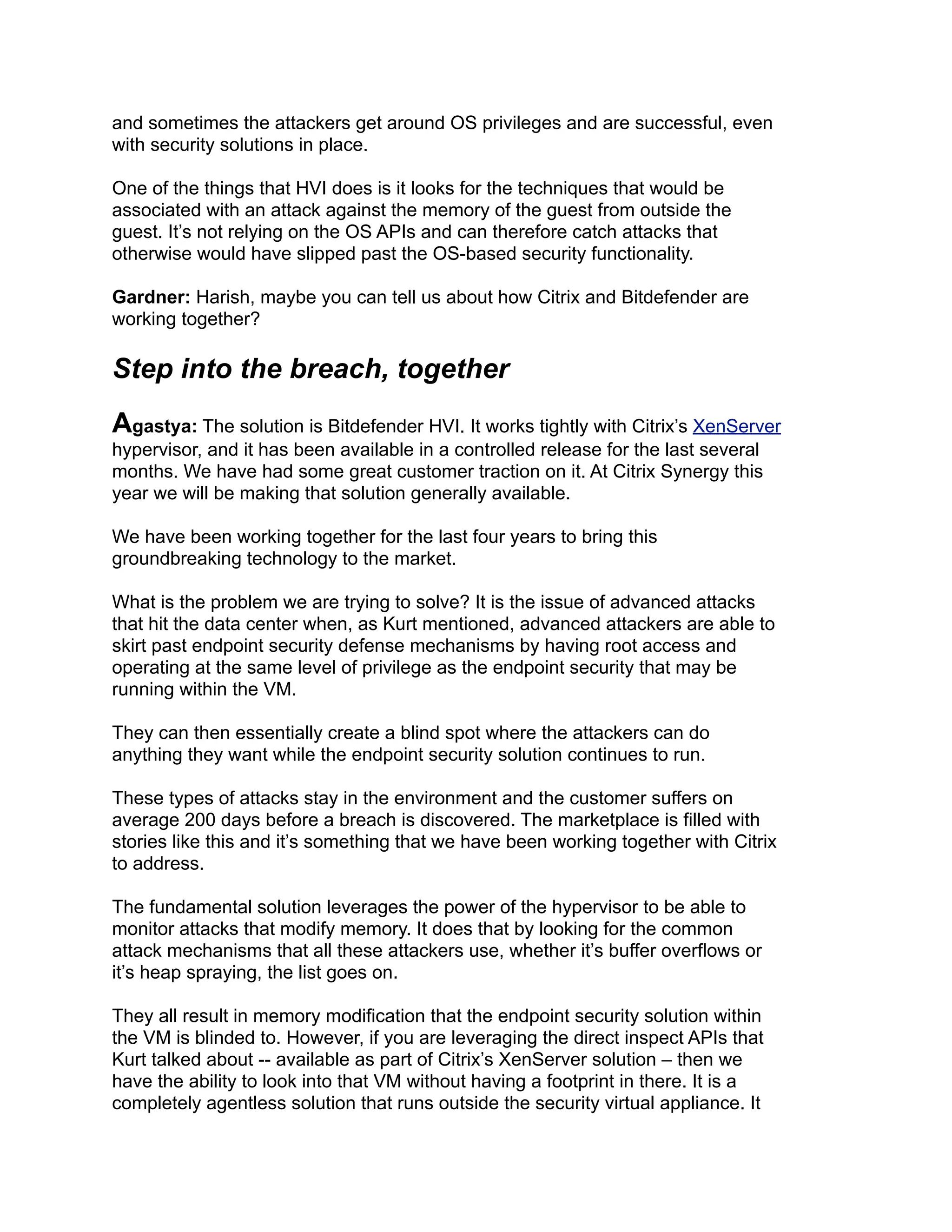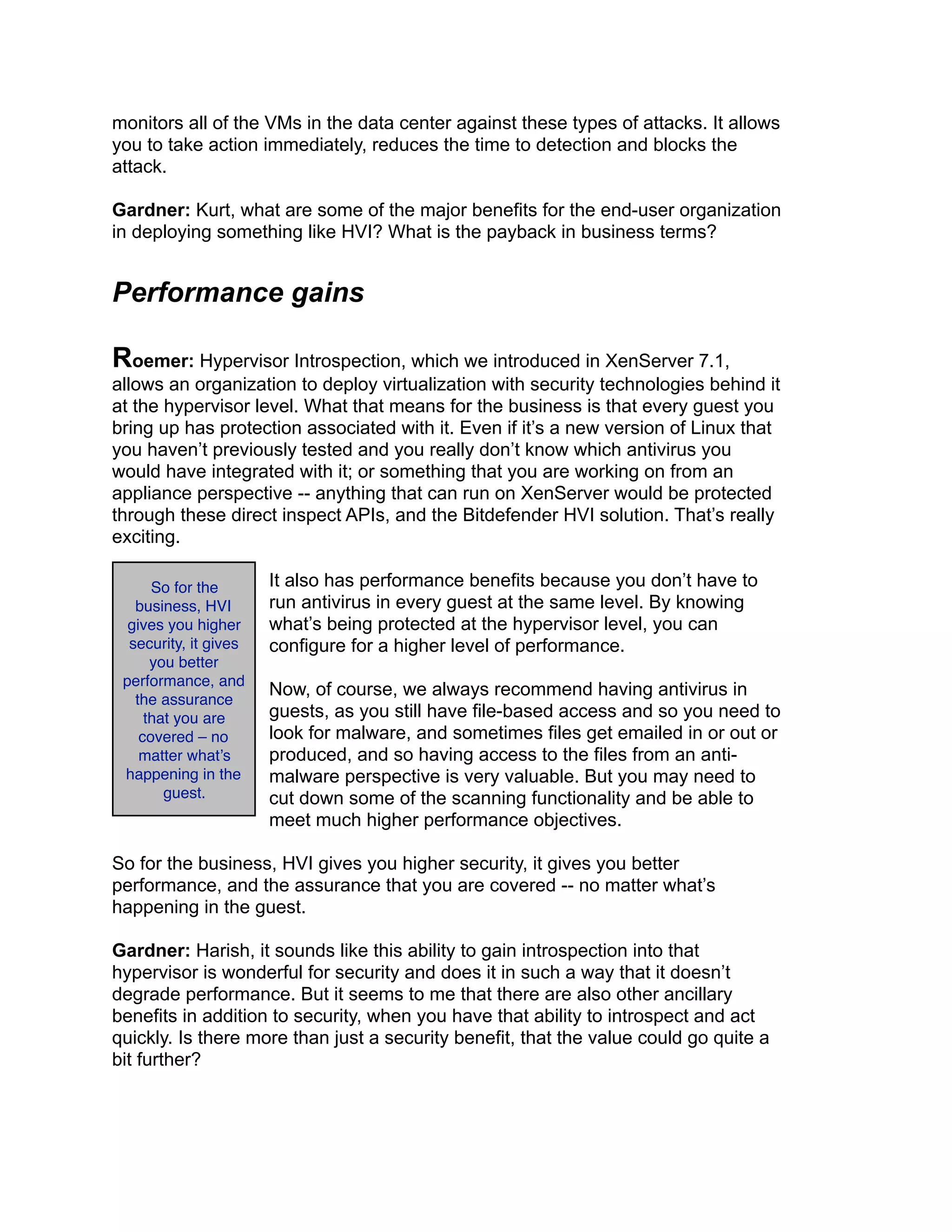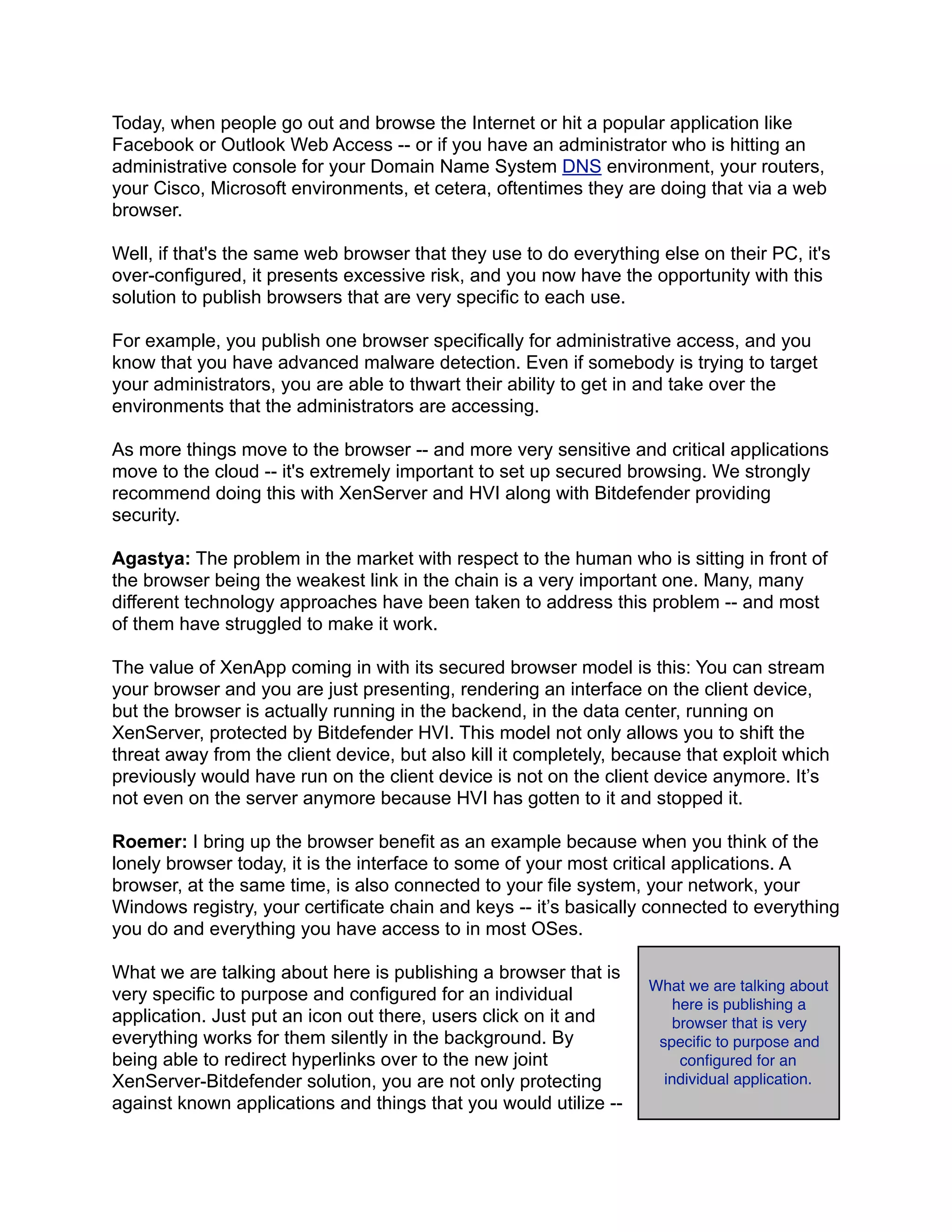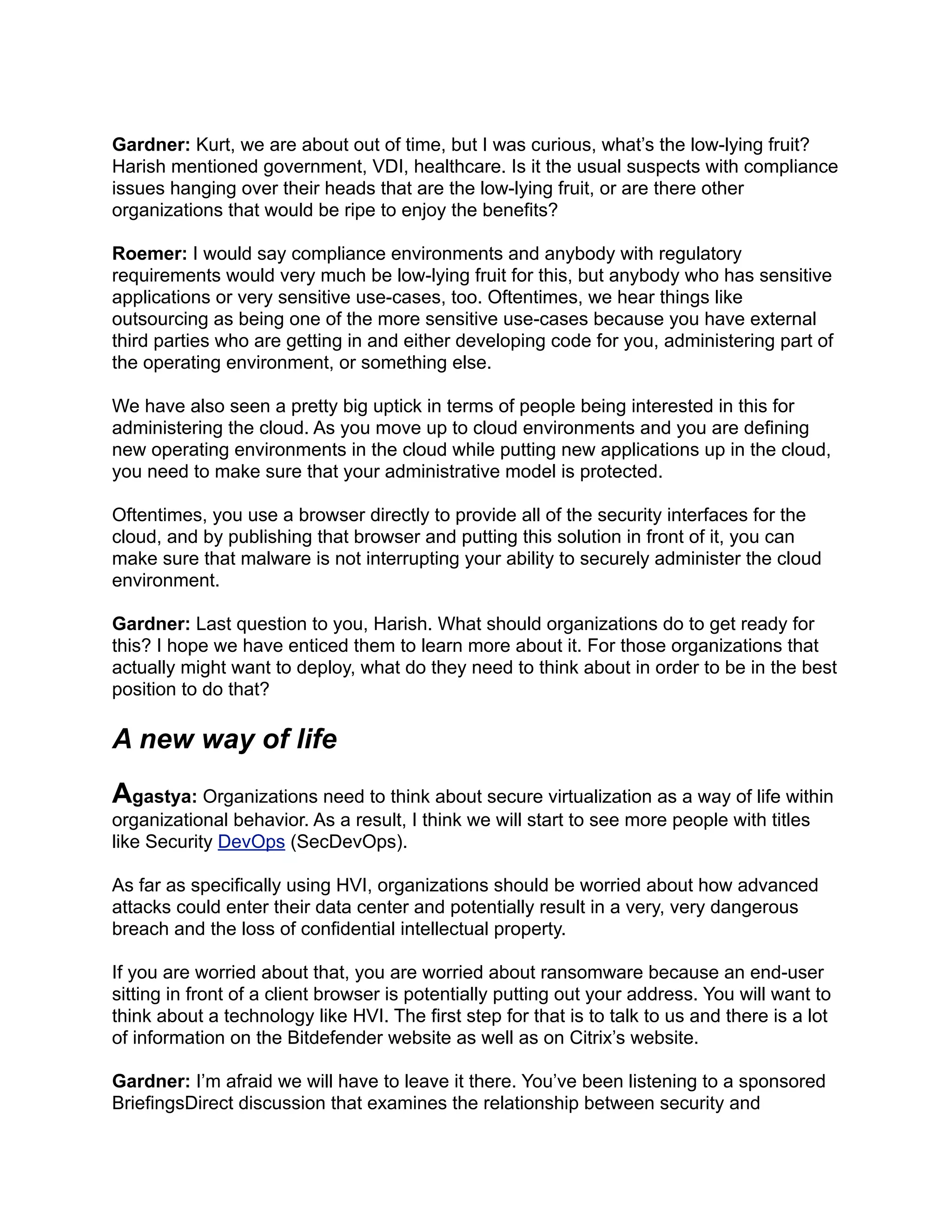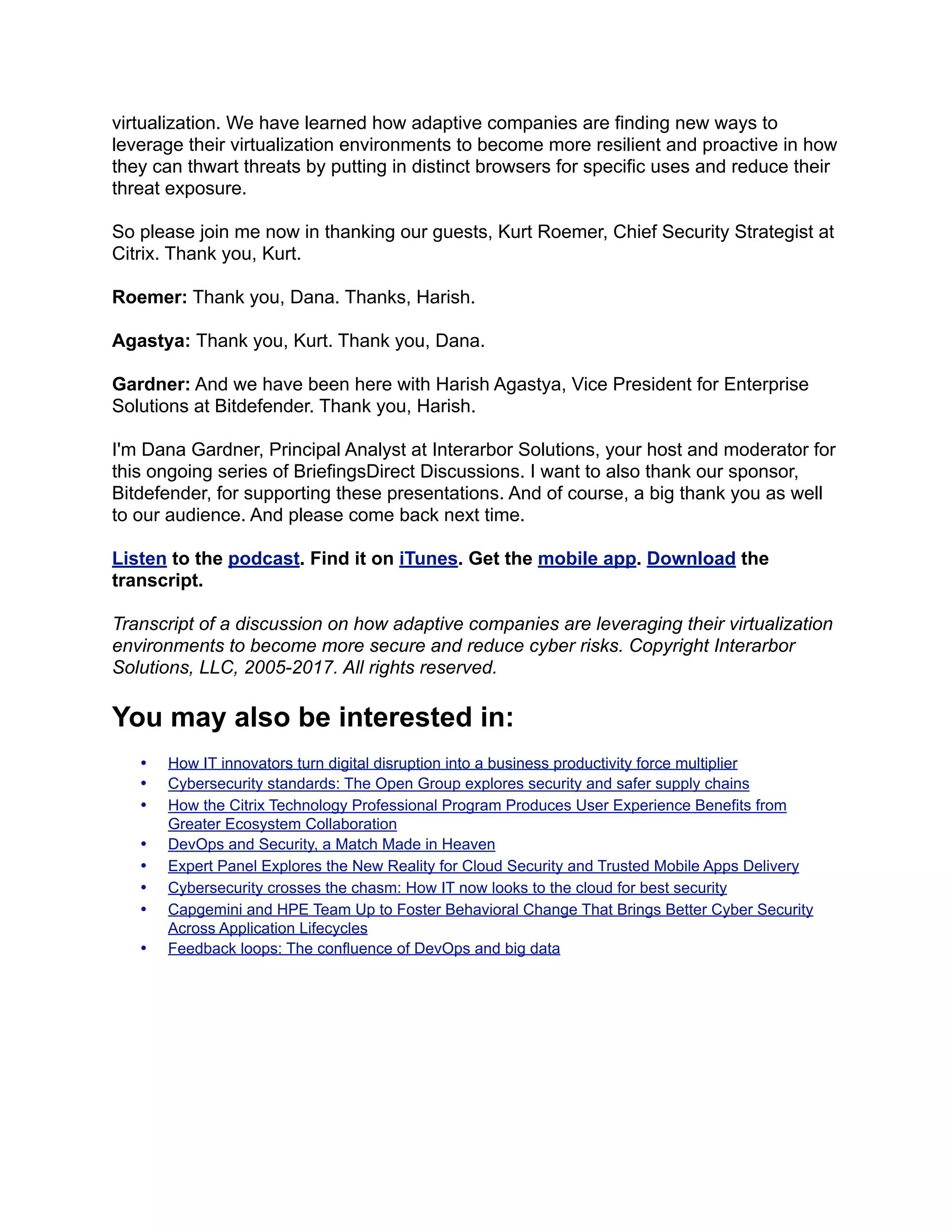The discussion focuses on how companies are using virtualization to enhance security measures against evolving cyber threats. Experts emphasize the need for comprehensive and layered security approaches at various levels, including hardware and application-specific environments, to mitigate risks associated with virtualization. Additionally, the collaboration between Bitdefender and Citrix on hypervisor introspection technology aims to provide advanced detection and prevention of sophisticated attacks while maintaining performance benefits.
